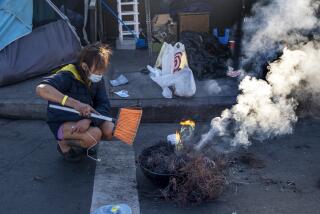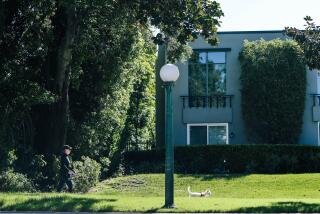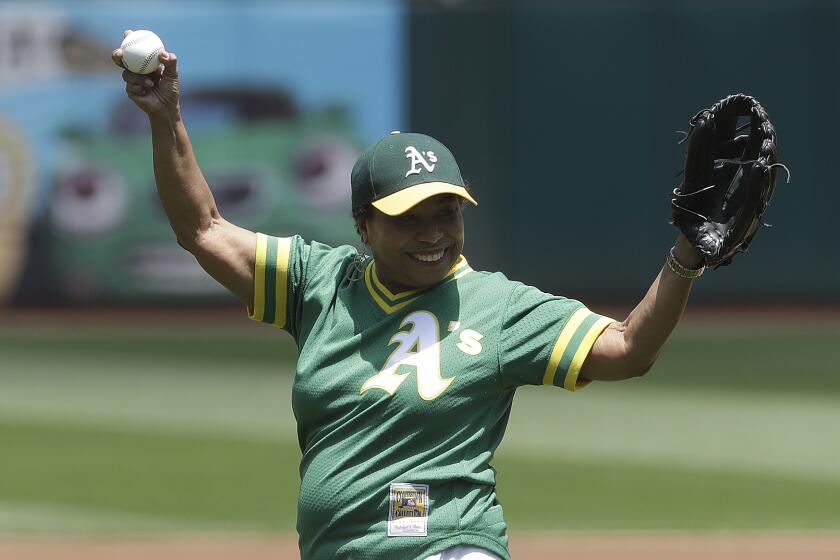L.A. has long history of showy holiday lights, with a few dark periods
From Christmas Tree Lane to Wilshire Boulevard, Los Angeles has been known to go a little overboard when it comes to holiday lights.
With little fear of snow or freezing temperatures, outdoor lighting took hold early in L.A. (Indeed, some argued the lack of winter weather made the decoration all the more important as a way to mark the season.)
In the 1950s, downtown property owners held an elaborate lighting festival known as the Spectacle of Lights that gave much of the city center a bright white glow. The goal — besides getting into the holiday spirit — was to lure shoppers downtown at a time when merchants were facing more competition from suburban stores.
But there have been years when the celebrations were dimmed. The most serious was World War II, when fears of Japanese attacks left many Christmas displays unplugged.
In 1945, The Times reported, Glendale officials installed a huge tree on Brand Boulevard and cheerfully restored its holiday lights. It was the city’s first lighted display since 1941.
That display “had already been ordered and installed when the … attack on Pearl Harbor occurred,” the paper reported. The next three years, officials decided to go without the lights until the war came to an end.
The energy crisis of 1973 brought fresh calls for residents to forgo holiday lights.
“Dreaming of a Dark Christmas” was the headline on a Times story that reported on pleas to prioritize conservation over celebration. (Some complied; others didn’t.)
The Department of Water and Power took some heat when it refused to supply power to public displays operated by chambers of commerce and community groups across L.A. One councilman protested, noting that the holiday is “customarily celebrated with brightly colored, sparkling lights and a feeling of goodwill toward all men and women.”
By 1974, the crisis had eased and residents got the all-clear to hit the “on” switch again.
During the 2000 power crisis, some Californians complied with requests to hold off on their holiday lights for a few hours each night. Officials recommended that residents turn them on after 8 p.m., when peak demand on the power grid had passed.
“We don’t want to put anybody in a position where they can’t enjoy their holiday lights,” Southern California Edison spokesman Steve Conroy said at the time. “It’s just another level of conservation that customers can consider.”
In some communities, the appeal prompted residents to turn on each other. Cities fielded calls from people complaining that their neighbors had the decorations going full blast well before 8 p.m.
One of the victims of the crisis was the grand Christmas tree at the state Capitol in Sacramento. As The Times reported that December:
With the state’s electricity supplies unusually low Tuesday evening and utilities begging customers to resist plugging in Christmas lights, First Lady Sharon Davis and a Bakersfield youngster sent power flowing to 4,000 bulbs on a towering fir on the north steps of the Capitol — but for just 30 minutes.
“Tonight while some Californians are going without power,” the governor told a festive crowd packed into the Capitol rotunda, “let the light in our hearts represent the true spirit of the season.”
A few minutes after 5 p.m., the first lady helped 7-year-old David Almberg press a button to light the tree. The crowd “oohed” at the sight of the sparkling, 56-foot white fir from the Sierra foothills near Placerville.
At 5:35, the governor pressed the “off” button and the tree fell dark.
The crowd wandered away quietly.
shelby.grad@latimes.com
Twitter: @shelbygrad
More to Read
Sign up for Essential California
The most important California stories and recommendations in your inbox every morning.
You may occasionally receive promotional content from the Los Angeles Times.











